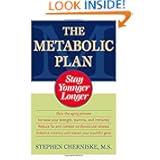White Bean Dip with Sun Dried Tomatoes and Red Peppers
1 TBSP extra virgin olive oil
2 large red bell peppers, seeded and halved
1 can (15ozs) white beans, rinsed and drained
10 marinated sun-dried tomato halves, coarsely chopped
2 garlic cloves, chopped
3 TBSP low fat mayonnaise
1 tsp dried oregano
1 tsp ground cumin
1/4 tsp ground chipotle chili powder or pinch cayenne pepper
salt and freshly ground black pepper, to taste
Parsley sprig, for garnish
Preheat oven to 450. Spread half of olive oil over baking sheet; spread other half of oil evenly over skin sides of pepper halves. Place peppers in single layer, skin side up, on baking sheet and roast for 20-25 minutes, until soft and lightly browned on top. Remove from over and cool. Pull loose skin off peppers and discard; coarsely chop peppers. Place in food processor or blender and puree. Add beans, sun-dried tomatoes, garlic, mayonnaise, oregano, cumin and chili powder or cayenne. Process to smooth consistency. Season to taste with salt and pepper. Refrigerated 1 hour before serving. Garnish with parsley and serve with fresh, cut up vegetables or whole grain pita. Keeps up to 3 days, tightly covered, in refrigerator.
Makes 2.5 cups. Per serving (1 TBSP): 18 calories, <1g fat, 3 g carbs, 1 g protein, 1 g dietary fiber, 22 mg sodium.
1 TBSP extra virgin olive oil
2 large red bell peppers, seeded and halved
1 can (15ozs) white beans, rinsed and drained
10 marinated sun-dried tomato halves, coarsely chopped
2 garlic cloves, chopped
3 TBSP low fat mayonnaise
1 tsp dried oregano
1 tsp ground cumin
1/4 tsp ground chipotle chili powder or pinch cayenne pepper
salt and freshly ground black pepper, to taste
Parsley sprig, for garnish
Preheat oven to 450. Spread half of olive oil over baking sheet; spread other half of oil evenly over skin sides of pepper halves. Place peppers in single layer, skin side up, on baking sheet and roast for 20-25 minutes, until soft and lightly browned on top. Remove from over and cool. Pull loose skin off peppers and discard; coarsely chop peppers. Place in food processor or blender and puree. Add beans, sun-dried tomatoes, garlic, mayonnaise, oregano, cumin and chili powder or cayenne. Process to smooth consistency. Season to taste with salt and pepper. Refrigerated 1 hour before serving. Garnish with parsley and serve with fresh, cut up vegetables or whole grain pita. Keeps up to 3 days, tightly covered, in refrigerator.
Makes 2.5 cups. Per serving (1 TBSP): 18 calories, <1g fat, 3 g carbs, 1 g protein, 1 g dietary fiber, 22 mg sodium.
